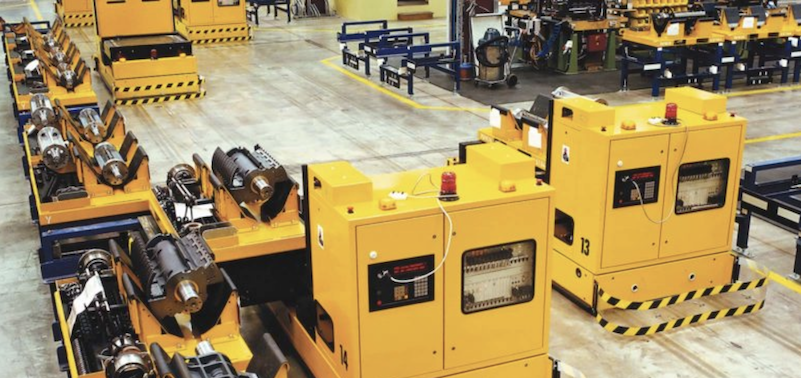Distribution leaders are increasingly aware of the importance of cultivating an adaptable work environment to excel through market fluctuations and overcome operational challenges. In addition, globalization, new technologies and a need for greater transparency combined with the transformations resulting from the COVID-19 pandemic have further accelerated the need for an adaptable working environment.
As with most core elements of an organization’s strategy, adaptability starts with its culture. This kind of flexibility allows organizations to pivot during times of disruptive and radical change. Below, we highlight a few interlinked strategies that distribution leaders can implement to reinforce adaptability and flexible operations as a core mechanic within the company’s culture.
Effective Communication
Industry leaders are those adaptive companies that have successfully replaced siloed workgroups with modular units that can freely communicate and collaborate according to the situation at hand. Successful executors have consistently reinforced that for this to occur, employees from the floor level to the offices need to feel empowered to solve problems, take on initiatives and be recognized for it.
Hence, employee engagement is crucial — and an open, transparent and consistent communication chain is a catalyst to that. For example, many industrial manufacturers where employees could not work from home started holding regular company-wide townhalls during COVID-19 to address employee safety concerns. Seeing the extent of their positive feedback and increased employee engagement and alignment, a great majority of them plan to continue holding the engagement sessions well beyond.
Business leaders must be transparent and authentic in their messaging, and relay to the wider organization why constant change and adaptability are necessary, and how they will be enabled and managed sustainably. Executing this effectively requires trust, which can only be achieved through open and honest communication.
Innovation Appetite
Cultivating an innovation appetite involves fostering an in-house culture where employees at all levels are empowered to contribute innovative ideas and own their failures as much as their wins. This means giving the employees the freedom to take ownership of initiatives and the freedom to fail, with managed risk, of course, and then learn from it and try again. This enables companies to be nimble enough to respond to dynamic customer, environmental, and market needs while striving for continuous improvement.
Expecting the handful of people at the top of the org chart to always have the best ideas may be an ineffective strategy for the long term. Instead, a major predictor of creativity is subject-matter expertise, where those closest to the hands-on challenges often have the greatest potential to innovate. Encouraging risk-controlled experimentation can reap huge benefits.
For example, this could be as simple as holding internal pitch competitions where employees pitch innovative ways to solve chronic issues plaguing business operations, and providing the winners with the resources and backing to drive those ideas to execution. General Motors and Whirlpool have been some of the successful adopters of this strategy. Many of today’s most used products and services, like Google Docs, resulted from internal business innovation as well.
Continuous Education
Another effective strategy to build a culture of adaptability is by encouraging learning and coaching such that every individual is constantly being challenged to learn and grow. At the same time, this ties in with employee recognition for overcoming those very challenges. As an organization grows, the demand for skills for each individual is a moving target as technologies and demand patterns change. The more aware workers are about this need for change and can upgrade their skills while being immersed in their role, the better their adaptability.
Learning is a continuous mentality, best built into day-to-day work activities through stretch roles, job shadow and mentorship opportunities. Additionally, continuous training opportunities that workers want to pursue at their own will in the form of paid time-off or even training reimbursement programs provide much-needed encouragement to maintain the continuous learning mentality. This being said, the learning needs and patterns for every individual are different — and those must be taken into account as well.
Standardized Process
Sustainable fluid operations and an adaptable workforce result in focusing on areas that value the most from human efforts. This means minimizing the resources expenditure in repetitive processes by standardizing them to ensure safe and quality compliant execution.
Leveraging Standard Operating Procedures, or SOPs, can be a neat way of documenting processes for repeatable and reliable execution. This helps free up team members to participate in newer challenges that require closer human attention, innovation and brainstorming.
In a fast-moving environment, companies need to emanate trust within their employees and maintain consistent messaging of the need to adapt and grow. If your competitive reality is uncertain and rapidly evolving, as is true for the majority of industrial sectors, you need internal innovation and continuous learning in a sustainable manner in order to be a market leader. The above strategies are by no means all-inclusive — but are a good starting point to figure what other strategies may also work for your specifics.
Bryan Christiansen is founder and CEO of Limble CMMS, a mobile CMMS software designed to help managers organize, automate and streamline their maintenance operations.
Related Posts
-
Industrial distributor appoints Scott Durand as president and Melissa Book as CFO.
-
Atlanta-based retail giant said it will open two more distribution centers in Miami in 2022.
-
The Dallas-based building materials giant is unloading the business to L&W Supply for an undisclosed…





